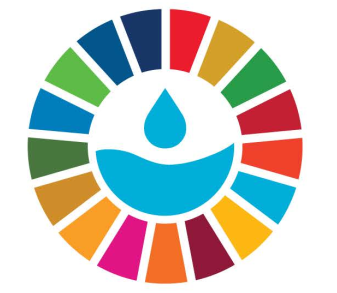Capacity Building of Water Utilities for Accelerating SDG6 Implementation - The Danube Learning Partnership (D-LeaP)
The International Association of Water Service Companies in the Danube River Catchment Area (IAWD)
(
Non-governmental organization (NGO)
)
#SDGAction50592
Description
Although access to water and sanitation services in the Danube region is high compared to the rest of the world, some areas still suffer from inadequate water service provision and sanitation. Governments and water professionals in the Danube region face a double challenge of meeting their citizens’ demand for universal, good quality, efficient, and financially sound or - in one word - sustainable water and wastewater services, while catching up to the environmental requirements of the European Union acquis communautaire.
To address these challenges, the World Bank and the International Association of Water Service Companies in the Danube River Catchment Area (IAWD) have been running in partnership the Danube Water Program, with a 17 million Euro, four-phased financing from the Government of Austria. Launched in 2013, the DWP is an advisory and capacity building initiative in the water sector that aims at strong utilities, smart policies and sustainable services in the Danube region. The Program is targeted in particular at (i) water supply and wastewater sector policy makers and regulators; (ii) senior technical and managerial staff of water supply and wastewater utilities; and (iii) senior level staff from water supply and wastewater associations.
One of the key, consistent challenges faced by the countries in the Danube region, and as identified by a regional review (State of the Sector report, World Bank, 2015), is related to the capacity building needs of professional staff working in the sector. In part this is due to staff and management turnover following political changes, and in part due to limited professional development and training opportunities. To address this, DWP established in 2016 Danube Learning Partnership (D-LeaP) as a regional, integrated and sustainable capacity building initiative of national water utility associations and IAWD, which aims to provide a comprehensive curriculum to the staff of water supply and sanitation utilities located in the Danube region. D-LeaP delivers a set of capacity building programs to participating utilities and professional staff several capacity building programs as part of a virtuous cycle of Check – Plan – Do performance improvements. The programs which are offered to the 17 countries in the Danube region are grouped in three main categories: Foundation Programs (Benchmarking, Utility Management Training); Technical Programs (Energy Efficiency, Non-Revenue Water, Water Safety Planning and Crisis Management, Commercial Efficiency, Asset Management); Implementation Programs (Access to Financing).
D-LeaP presents a unique game changer model in its organisational set-up, as it uses the know-how of private sector to develop programs at the regional level, and the expertise and resources of national water associations to deliver the programs with their local experts (the Hubs), in the respective national languages of the Danube countries. In addition, the governance model of D-LeaP provides a shared ownership among the national water associations, that are implementing the programs.
The commitment is to further advance the implementation of D-LeaP in the Danube region, and to potentially copy D-LeaP in other regions across the world, to support the implementation of SDG6, and to achieve sustainable WASH services for all.
Capacity development is essential for supporting financing, service delivery, innovation and data management needed for sustainable and equitable WASH services. Professional water associations can play a significant role in (1) developing and implementing regular capacity development programs, in (2) creating national training institutions and in (3) in establishing standards, regulations and professional certification.
In consequence, IAWD together with its members, the national water associations in the region, has designed the Danube Learning Partnership (D-LeaP) to provide a comprehensive curriculum to the staff of water supply and sanitation utilities located in the Danube region. This mechanism allows the national water associations to offer eight regionally developed training programs following learning-by-doing principles and delivered by national experts and in local language. In total, 487 utilities in 13 countries have been trained since the launch of D-Leap in 2017.
IAWD together with its member water associations are committed to further advance the implementation of the D-LeaP programs, that target performance improvements of water utilities across the Danube region, and as a result contribute to sustainable and equitable WASH services for the population. A skilled workforce is the backbone of a strong utility, which are the precondition to accelerate the implementation of SDG6. In addition to the Danube region, the proposed action aims to reach out to other regions, beyond the Danube, and to make the model of D-LeaP accessible to other interested water associations and water Utilities.
The International Association of Water Service Companies in the Danube River Catchment Area (IAWD), National Water Associations in the Danube region, Danube Water Program
SDGS & Targets
Goal 6
Ensure availability and sustainable management of water and sanitation for all
6.1
By 2030, achieve universal and equitable access to safe and affordable drinking water for all
6.1.1
Proportion of population using safely managed drinking water services
6.2
By 2030, achieve access to adequate and equitable sanitation and hygiene for all and end open defecation, paying special attention to the needs of women and girls and those in vulnerable situations
6.2.1
Proportion of population using (a) safely managed sanitation services and (b) a hand-washing facility with soap and water
6.3
By 2030, improve water quality by reducing pollution, eliminating dumping and minimizing release of hazardous chemicals and materials, halving the proportion of untreated wastewater and substantially increasing recycling and safe reuse globally
6.3.1
Proportion of domestic and industrial wastewater flows safely treated
6.3.2
Proportion of bodies of water with good ambient water quality
6.4
6.4.1
Change in water-use efficiency over time
6.4.2
Level of water stress: freshwater withdrawal as a proportion of available freshwater resources
6.5
By 2030, implement integrated water resources management at all levels, including through transboundary cooperation as appropriate
6.5.1
Degree of integrated water resources management
6.5.2
Proportion of transboundary basin area with an operational arrangement for water cooperation
6.6
6.6.1
Change in the extent of water-related ecosystems over time
6.a
6.a.1
Amount of water- and sanitation-related official development assistance that is part of a government-coordinated spending plan
6.b
Support and strengthen the participation of local communities in improving water and sanitation management
6.b.1
Proportion of local administrative units with established and operational policies and procedures for participation of local communities in water and sanitation management
SDG 14 targets covered
| Name | Description |
|---|
Deliverables & Timeline
Resources mobilized
Partnership Progress
Feedback
Action Network

Timeline
Entity
SDGs
Region
- Europe
Other beneficiaries
Other regions to which D-LeaP model can be transferred
More information
Countries









Contact Information
Katerina , Head of Secretariat

